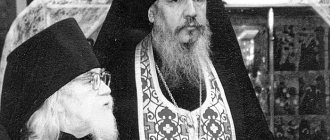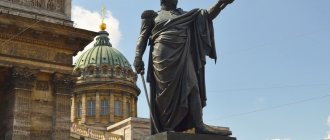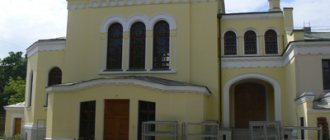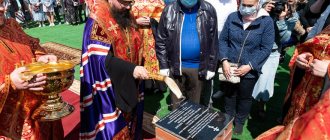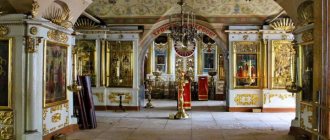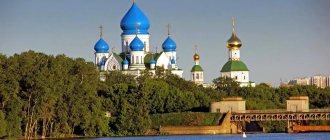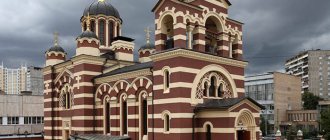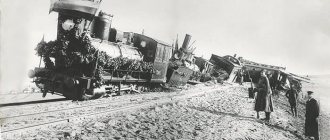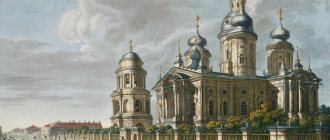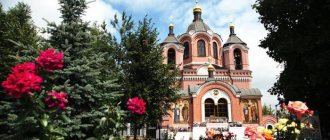Mir
Russia St. Petersburg Church of the Merciful Mother of God (St. Petersburg) Map loading in progress...
{"format":"leaflet","minzoom":false,"maxzoom":false,"limit":50,"offset":0,"link":"all","sort":[""], "order":[],"headers":"show","mainlabel":"","intro":"","outro":"","searchlabel":"\u2026 \u0441\u043b\u0435\ u0434\u0443\u044e\u0449\u0438\u0435 \u0440\u0435\u0437\u0443\u043b\u044c\u0442\u0430\u0442\u044b","default":"","import-annotation":false,"width ":"auto","height":"350px","centre":{"text":"","title":"""link":"""lat":59.9269000000000033878677641041576862335205078125,"lon": 30.24849999999999994315658113919198513031005859375,"icon":""},"title":"","label":"","icon":"","lines":[],"polygons":[],"circles":[ ],"rectangles":[],"copycoords":false,"static":false,"zoom":8,"defzoom":14,"layers":["OpenStreetMap"],"image layers":[] ,"overlays":[],"resizable":false,"fullscreen":true,"scrollwheelzoom":true,"cluster":false,"clustermaxzoom":9,"clusterzoomonclick":true,"clustermaxradius":80, "clusterspiderfy":true,"geojson":"","clicktarget":"","showtitle":true,"hidenamespace":false,"template":"","userparam":"","activeicon": "","pagelabel":false,"ajaxcoordproperty":"","ajaxquery":"","locations":[{"text":"\u003Cb\u003E\u003Ca href=\"/palomnik/%D0% A6%D0%B5%D1%80%D0%BA%D0%BE%D0%B2%D1%8C_%D0%9C%D0%B8%D0%BB%D1%83%D1%8E%D1%89% D0%B5%D0%B9_%D0%91%D0%BE%D0%B6%D0%B8%D0%B5%D0%B9_%D0%9C%D0%B0%D1%82%D0%B5%D1% 80%D0%B8_(%D0%A1%D0%B0%D0%BD%D0%BA%D1%82-%D0%9F%D0%B5%D1%82%D0%B5%D1%80%D0% B1%D1%83%D1%80%D0%B3)\» title=\»\u0426\u0435\u0440\u043a\u043e\u0432\u044c \u041c\u0438\u043b\u0443\u044e\u0449\u0435\u0439 \u0411\u043e\u0436\u0438\u0435\u0439 \u041c\u0430\u0442\u0435\u0440\u0438 (\u0421\u0430\u043d\u043a\u0442-\u041f\u0435\u0442 \u0435\u0440\u0431\u0443 \u0440\u0433)\»\u003E\u0426\u0435\u0440\u043a\u043e\u0432\u044c \u041c\u0438\u043b\u0443\u044e\u0449\u0435\u0439 \u0411\u04 3e\u0436\u0438\u0435\ u0439 \u041c\u0430\u0442\u0435\u0440\u0438 (\u0421\u0430\u043d\u043a\u0442-\u041f\u0435\u0442\u0435\u0440\u0431\u0443\u0440\u 0433)\u003C/a\u003E \u003C/b\u003E\u003Chr /\u003E\u003Ca href=\"/palomnik/%D0%A1%D0%B2%D0%BE%D0%B9%D1%81%D1%82%D0%B2%D0 %BE:%D0%90%D0%BD%D0%BD%D0%BE%D1%82%D0%B0%D1%86%D0%B8%D1%8F\» title=\»\u0421\u0432\ u043e\u0439\u0441\u0442\u0432\u043e:\u0410\u043d\u043d\u043e\u0442\u0430\u0446\u0438\u044f\u003E\u0410\u043d\u043d\u043e\u 0442\u0430\u0446\u0438 \u044f\u003C/a\u003E: \u0434\u0435\u0439\u0441\u0442\u0432\u0443\u044e\u0449\u0438\u0439 \u0445\u0440\u0430\u043c \u0421\u0 430\u043d\u043a\u0442- " u0420\u0443\u0441\u0441\u043a , \u0440\u0430\u0441\u043f\ u043e\u043b\u043e\u0436\u0435\u043d\u043d\u044b\u0439 \u0432 \u0421\u0430\u043d\u043a\u0442-\u041f\u0435\u0442\u0435\u0440\u 0431\u0443\u0440\u0433\u0435 \u043f\u043e \u0430\u0434\u0440\u0435\u0441\u0443 \u0411\u043e\u043b\u044c\u0448\u043e\u0439 \u043f\u0440\u043e\u0441\u043f \u0435\u043a\u0442 \u0412\u0430 \u0441\u0438\u043b\u044c\u0435\u0432\u0441\u043a\u043e\u0433\u043e \u043e\u0441\u0442\u0440\u043e\u0432\u0430, \u0434. 100. \u0436\u0438\u0435\u0439 \u041c \u0430\u0442\u0435\u0440\u0438 \u00ab\u041c\u0438\u043b\u0443\u044e\u0449\u0430\u044f\u00bb (\u00ab\u0414\u043e\u0441\u0442\u04 3e\u0439\u043d\u043e\ u0435\u0441\u0442\u044c\u00bb).,""title":"\u0426\u0435\u0440\u043a\u043e\u0432\u044c \u041c\u0438\u043b\u0443\u044e\u0449\u0435\u04 39\u0411 \u043e\u0436\u0438\u0435\u0439 \u041c\u0430\u0442\u0435\u0440\u0438 (\u0421\u0430\u043d\u043a\u0442-\u041f\u0435\u0442\u0435 \u0440\u0431\u0443\u0440 \u0433)","link":"","lat":59.9269000000000033878677641041576862335205078125,"lon":30.24849999999999994315658113919198513031005859375, "icon":""}],"imageLayers":[]}
59.926747; 30.24827
Russia, St. Petersburg, Leather line, 39k10
Saint Petersburg
Russia
Telephone:
8 (951) 661-01-21
Church of the Merciful Icon of the Mother of God in Galernaya Gavan
- an operating temple of the St. Petersburg diocese of the Russian Orthodox Church, located in St. Petersburg at Bolshoy Prospekt Vasilievsky Island, 100. Named in honor of the icon of the Mother of God “Merciful” (“It is worthy to eat”). It was founded in 1889 in memory of the coronation of Alexander III and Maria Feodorovna. Consecrated in 1898.
Near the temple there was an almshouse, an orphanage, a school for orphans, and a charitable society. In 1932, the Soviet government closed the temple, and an educational and technical station for light diving training was located in its building. Since 2006, the gradual return of the Russian Orthodox Church began, which was finally formalized in 2012. Since July 26, 2015, the church building has been closed for restoration and services are held in the chapel.
History[edit]
Creation of the temple[edit]
In 1887, the priest of the Church of the Holy Life-Giving Trinity in Galernaya Harbor, Vasily Albitsky, with the clergy and parishioners, petitioned for permission to begin the construction of a new stone parish church in the name of the icon of the Merciful Mother of God. The temple was built in 1894, subordinated to the Trinity Havana Church, and until until 1923 it did not have its own clergy. The Church of the Icon of the Mother of God “Merciful” (“It is worthy to eat”) was built on Galernaya Harbor by order of the Naval Department in memory of the coronation of Alexander III and Maria Feodorovna. Founded in 1889 and built according to the design of architect V. A. Kosyakov and engineer D. K. Prussak.
Church before 1917
The temple was erected in honor of the Mother of Mercy, and the gracious “Merciful” icon sent from Athos was placed in it. The history of the miraculous icon of the Mother of God “Merciful” (“It is worthy to eat”) is connected with the appearance of the famous liturgical hymn of the Orthodox Church “It is worthy to eat.” Upon completion of its construction and installation of temple crosses in 1894, the church became the dominant feature of the area, its height was 42 meters.
On December 15, 1896, the left side chapel was consecrated in the name of Saints Andrew of Crete and the Prophet Hosea in memory of the rescue of Alexander III in the train accident at Borki. The main altar of the temple was solemnly consecrated on October 25, 1898 by Bishop Benjamin of Yamburg together with Father John of Kronstadt.
From 1899 to 1900, Gapon, Georgy Apollonovich, acted as a preacher in the church. Galernaya Gavan was the habitat of St. Petersburg tramps. Gapon's sermons were very popular and attracted many people, the number of whom reached 2 - 3 thousand. Often the church could not accommodate all those who came to his sermon. The headman of this church at that time was Vladimir Sabler. On March 28, 1900, Metropolitan Anthony consecrated the right side chapel in the name of Saints Sergius of Radonezh and Theodosius of Chernigov. In the summer of 1903, the bell tower above the western entrance was crowned with a gilded imperial crown. In 1910, Archpriest Georgy Shavelsky served in the church.
After the consecration, a charitable society was opened at the church, maintaining a school for orphans, an orphanage and an almshouse.
Closing of the temple[edit]
On June 2, 1932, the church was closed, transferred to the scuba diving training squad at Galernaya Harbor, and the following year it was adapted to serve as a pressure chamber for the scuba diving training squad. In a strong and tall building, a unique training station for its time was equipped - the first in the USSR and the second, after England, in Europe - a pressure chamber for diving under a dome and a pipe leading to it. However, the luxurious interior of the church was destroyed. A swimming pool was equipped inside the church for training rescue divers. The transfer of the temple to a diving training unit may have saved the temple from complete destruction.
Back in the early 1990s, the mayor of St. Petersburg, Anatoly Sobchak, wrote letters asking to return the temple to the Church, but then the Ministry of Defense did not satisfy the request.
In 1999, the inspection for the protection of monuments issued a conclusion on the need for strengthening and restoration work. The pool in the altar part poses a danger to the foundation; the tower threatens to destroy the supporting structures.
Architectural dimensions of the temple in the name of the icon of the Merciful Mother of God
Address of the object:
St. Petersburg, Bolshoi Prospekt V.O., 100
Dates for carrying out measurement work at the site:
November 2016 - February 2022.
Work carried out at the site:
A full range of measuring works. Laser scanning of the temple interiors.
Historical reference:
In 1886, a petition was filed to allocate a plot of land for the construction of a new parish church. In 1887, the project of the temple in the name of the icon of the Merciful Mother of God was approved; its authors were the architect V. A. Kosyakov and the engineer D. K. Prussak.
June 11, 1887
The construction site was consecrated.
Work began in 1888 with a temporary wooden chapel, where they installed the icon of the Merciful Mother of God (It Is Worthy), which gave the name to the future church, brought from Athos by Hieromonk Arseny, a famous preacher and missionary. The three-aisle temple for 1,800 people was built on a marshy area, so in 1888, under the leadership of F. S. Kharlamov, an embankment was built and other work was carried out to strengthen the soil under the foundation.
The church was founded in 1889
on Galernaya Harbor by order of the Maritime Department in memory of the coronation of Alexander III and Maria Feodorovna. The Emperor donated 25 thousand rubles for construction, and therefore the belfry was later decorated with a large gilded crown.
On May 29, 1889, the foundation stone of the Temple was consecrated by Bishop Mitrofan of Ladoga. By that time, the foundation and part of the walls had already been built.
In the fall of 1892, the building was put under the roof. The iron for the domes was donated by the benefactor of Galernaya Harbor, Countess N.A. Stenbock-Fermor.
In 1892 the Temple was roughly ready, but then a lack of funds greatly slowed down the work. The matter was moved forward only by the energy of Chief Prosecutor K.P. Pobedonostsev, who understood the great importance of the temple for the working outskirts.
Construction of the temple was completed in 1894
installation of temple crosses. The building became the dominant feature of the area; its height from the surface of the earth to the foot of the cross on the main dome was 42 meters.
The stone church, topped with a five-domed dome, is designed in the style of the temples of ancient Byzantium and is a bit reminiscent of the St. Sophia Cathedral in Constantinople. Black domes have a smooth spherical shape. The central dome, having a much larger size than the others, rises upward and is, as it were, supported from below by four small sub-domes, only half protruding from the building in the form of apses. In ancient Byzantine architecture such domes are called conchs. The drum of each dome is surrounded by an arcade of windows, which was very characteristic of the Byzantine style. There are 18 windows on the drum of the main dome, and 8 on the conchs. The bell tower, which is equal in height to the small domes, is designed in the same style. Instead of windows, it is surrounded by an arcade of 6 openings for the belfry.
Interior decoration continued for another 15 years.
December 15, 1896
Bishop Nazarius of Gdov consecrated the left (northern) chapel of the temple in the name of St. Andrew of Crete and the Prophet Hosea in memory of the salvation of Alexander III in the train accident in Borki. After this, the temple was accepted by the maritime department, which transferred funds to complete construction.
The main altar of the temple was solemnly consecrated on October 25, 1898
Bishop Benjamin of Yamburg together with Father John of Kronstadt.
A single-tiered bog oak iconostasis from the workshop of P. S. Abrosimov with images based on the “Athos model” by Moscow icon painters was installed here. The sculpting in the interior was done by O. S. Konoplev. On March 28, 1900,
Metropolitan Anthony consecrated the right (southern) chapel in the name of Saints Sergius of Radonezh and Theodosius of Chernigov, but only three years later the work of gilding the cross, cladding the staircase with granite, and installing a fence was completed in the church. At the same time, images of the Venerable Seraphim of Sarov and the “Tenderness” icon of the Mother of God, consecrated on the saint’s shrine, arrived from Sarov. 18th-century icons of the Savior and the Mother of God, as well as a gilded cross from 1727, were transferred from the Havana Church to the temple. A large image of St. Nicholas was presented by the manufacturer T. T. Chupyatov, and later a chandelier made of gilded bronze weighing 10 pounds was presented.
In 1903
the bell tower was crowned with a golden crown. A metal fence on a granite base was built along the road in 1903 (lost). A garden was laid out around the temple. The Epiphany blessing of water took place on the seaside, where the religious procession was taking place.
The Nevsky Orthodox Brotherhood operated at the temple since 1910. After the consecration, a charitable society was opened at the church, maintaining a school for orphans, an orphanage and an almshouse.
June 2, 1932
The church was closed, transferred to the scuba diving training squad at Galernaya Harbor, and the following year it was adapted to serve as a pressure chamber for the scuba diving training squad.
In a strong and tall building, a unique training station for its time was equipped - the first in the USSR and the second, after England, in Europe - a pressure chamber for diving under a dome and a pipe leading to it.
The luxurious interior of the church was destroyed. A swimming pool was installed inside the church for training rescue divers. Devices for conducting experiments and training were also built in the altar and side chapels. In the northern aisle there is a museum exhibition dedicated to the life-saving equipment of submariners.
Accommodation in the temple of a training and technical station for light diving training of the Red Banner diving detachment named after S.M. Kirov may have saved the temple from its complete destruction.
Back in the early 1990s, the mayor of St. Petersburg, Anatoly Sobchak, wrote letters asking to return the temple to the Church, but then the Ministry of Defense did not satisfy the request.
In 1999
The inspection for the protection of monuments gave a conclusion on the need for strengthening and restoration work: the pool in the altar part poses a danger to the foundation, and the tower threatens to destroy the load-bearing structures.
In 2006
the parish was registered and, in fact, the first rector of the temple was appointed, since initially the temple was subordinate to the Trinity Havana Church and did not have its own clergy.
Archpriest Alexander Ganzhin became the first rector of the temple. On January 15, 2008,
a chapel inside the church was consecrated, and it was decided to completely return the temple itself to the Church in the near future.
In January 2009, for the first time in the last few decades, bells could be heard from the Church of Our Lady of Mercy. According to the 100TV channel, on Saturday, January 24, 2009, the sixty-kilogram bell was consecrated and then erected on the church tower. The shrine was cast in Rostov-on-Don at the expense of parishioners.
In February 2010, the church consecrated a small chapel.
On June 1, 2012, the Parish Council of the Temple approved the President of the Northern Capital Foundation, Mikhail Romanov, to the post of Chairman of the Board of Trustees.
December 19, 2012
The Russian Ministry of Defense handed over the temple to the Russian Orthodox Church, presenting a symbolic key to the church to representatives of the St. Petersburg Metropolis. The order to transfer the temple was one of the first documents signed by Sergei Shoigu as Minister of Defense. There are plans to create a spiritual center for the Armed Forces and law enforcement agencies on the basis of the temple complex of the Church of the Icon of the Mother of God “Merciful”.
On September 15, 2013, Patriarch Kirill of Moscow and All Rus' visited the temple. The Patriarch thanked everyone who is investing their efforts in recreating the historical appearance of the shrine. He also emphasized the importance of rebuilding the Church of the Merciful Icon of the Mother of God in the very near future.
On February 19, 2013, the dismantling and removal of educational equipment from the temple began: on February 4, the torpedo tube was already removed, and on February 19, it was the turn of the pressure chamber.
In January 2015, the publication of the St. Petersburg Metropolitanate “Living Water” described the condition of the temple as follows: “torn walls, hanging wires, a huge container lined with rusty tiles, a giant pipe, bashfully covered with a red temporary iconostasis.” In mid-June 2015, construction of the chapel was completed. After its consecration, conservation of the temple building and preparation for restoration work begins.
In November 2015, clearing of the paint began: the first fragments of the temple's paintings were revealed, which were found under ten layers of paint.
Work carried out at the facility of NPP Photogrammetry LLC:
— a full range of measurement works — laser scanning of the temple interiors — creation of measurement drawings — creation of color orthophotomaps
—
Current state[edit]
In 2006, the parish was registered and, in fact, the first rector of the temple was appointed, since initially the temple was subordinate to the Trinity Havana Church and did not have its own clergy. Archpriest Alexander Ganzhin became the first rector of the temple. On January 15, 2008, a chapel inside the church was consecrated, and it was decided to soon completely return the temple itself to the Church. In January 2009, for the first time in the last few decades, bells could be heard from the Church of Our Lady of Mercy.
In February 2010, the church consecrated a small chapel.
On June 1, 2012, the Parish Council of the Temple approved the President of the Northern Capital Foundation, Mikhail Romanov, to the post of Chairman of the Board of Trustees.
On December 19, 2012, the Russian Ministry of Defense handed over the temple to the Russian Orthodox Church, presenting a symbolic key to the church to representatives of the St. Petersburg Metropolis. The order to transfer the temple was one of the first documents signed by Sergei Shoigu as Minister of Defense. There are plans to create a spiritual center for the Armed Forces and law enforcement agencies on the basis of the temple complex of the Church of the Icon of the Mother of God “Merciful”.
On September 15, 2013, Patriarch Kirill of Moscow and All Rus' visited the temple. The Patriarch thanked everyone who is investing their efforts in recreating the historical appearance of the shrine. He also emphasized the importance of rebuilding the Church of the Merciful Icon of the Mother of God in the very near future.
In January 2015, the publication of the St. Petersburg Metropolitanate “Living Water” described the condition of the temple as follows: “torn walls, hanging wires, a huge container lined with rusty tiles, a giant pipe, bashfully covered with a red temporary iconostasis.”
Notes
- ↑ 1.01.1 The Russian Ministry of Defense transferred to the Church the Church of the Icon of the Mother of God “Merciful” in St. Petersburg / News / Patriarchy.ru
- 100 TV: The first ringing of the bell of the Temple of Our Lady of Mercy
- Video portal of the Soyuz TV channel | Orthodox video - In the Church of the Icon of the Mother of God of the Merciful Northern Capital, the rite of consecration of the small limit was performed
- Lyudmila Kuzmenkina. 110 years ago, the Alexander Nevsky Cathedral was founded in Novonikolaevsky. Evening Novosibirsk, 05/12/2007
- Putin celebrated Christmas at the temple in the Olympic Park
Architecture[edit]
Project of the temple
The stone church, crowned with a five-domed structure, was built in the style of the temples of ancient Byzantium and is a bit reminiscent of the St. Sophia Cathedral in Constantinople. The height of the church from the surface of the earth to the foot of the cross on the main dome reaches 42 meters. The domes have a smooth spherical shape. The central dome, having a much larger size than the others, rises upward and is, as it were, supported from below by four small sub-domes, only half protruding from the building in the form of apses. In ancient Byzantine architecture such domes are called conchs. The drum of each dome is surrounded by an arcade of windows, which was very characteristic of the Byzantine style. There are 18 windows on the drum of the main dome, and 8 on the conchs. The bell tower, which is equal in height to the small domes, is designed in the same style. Instead of windows, it is surrounded by an arcade of 6 openings for the belfry.
The church building was taken as the basis for the design of the Cathedral in the name of Alexander Nevsky in Novosibirsk, the Church of the Holy Image of Christ the Savior in Sochi and the Trinity Church in Orekhov-Borisov in Moscow. There is also a similarity with this church of the Transfiguration Cathedral in Sormovo (Nizhny Novgorod), which was built ten years later.
Links
- Vladimir Putin should pay special attention to this temple
- Website of the parish of the Church of the Icon of the Mother of God of Mercy
- NTV. “On Vasilievsky Island in St. Petersburg, the military returned to the believers the Church of the Merciful Icon of the Mother of God. The Russian Orthodox Church has been waiting for this event for almost 20 years.”
- RTR. News. “Military sailors handed over the keys to the Church of the Icon of the Mother of God “Merciful” to the St. Petersburg diocese
- TV1000. “Journalists were able for the first time to get inside the Church of the Icon of the Mother of God “Merciful” on Bolshoy Prospekt of Vasilievsky Island”
- Business TV. “The Russian Ministry of Defense handed over the church in St. Petersburg to the Russian Orthodox Church on the orders of Shoigu”
- RIA Novosti (St. Petersburg). “The Ministry of Defense returns to the Russian Orthodox Church the Church of the Merciful Icon of the Mother of God”
- Interfax RUSSIA. “The Ministry of Defense, by order of Shoigu, transfers the church in St. Petersburg to the Russian Orthodox Church
- Interfax Religion. “The Ministry of Defense, by order of Shoigu, handed over the church in St. Petersburg to the Church”
- File-RF. “The army handed over the key to the temple to the Orthodox Church”
- Radio Mayak. “The Ministry of Defense transferred the temple to the St. Petersburg diocese”
- Metro newspaper. “The keys to the temple where the pool was located were handed over to the Russian Orthodox Church”
- Church of the Mother of God of Mercy in the People's Catalog of Orthodox Architecture
- Encyclopedia ST. PETERSBURG. “Church of the MOTHER OF GOD “Tenderness” (Merciful)”
- Restoration of the Temple of the Icon of the Mother of God Merciful
- Temple in memory of the Holy Coronation of Their Imperial Majesties (video)
Patronal holidays[edit]
Icon of the Most Holy Theotokos “It is Worthy to Eat” (Merciful)
- June 24
Northern aisle - St. Theodosius, Archbishop. Chernigovsky
— February 18, September 22
Northern aisle - St. Sergius, abbot of Radonezh
— Cathedral of Moscow Saints, July 18, October 8
Southern aisle - Rev. Andrey Kritsky
- October 30
Southern aisle - prophet. Hosea
- October 30
